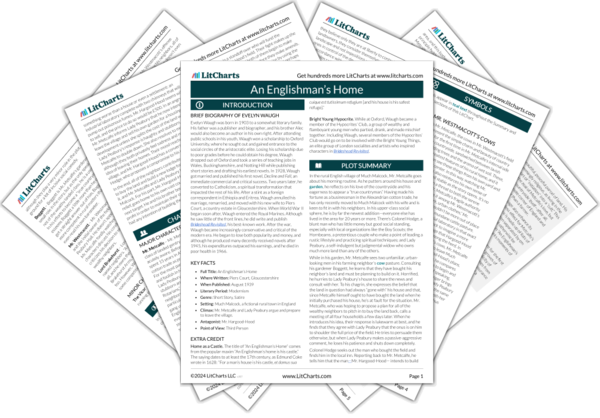“An Englishman’s Home” frequently revisits the idea of the wealthier classes using their money to protect the welfare of their larger communities. This passage introduces an ideal vision of how this principle should work: the gentry build and preserve common buildings and care for the town financially, and the peasantry go about their work and maintain the status quo. In this way, they uphold the class system. As the expression referenced in the title suggests, each wealthy household views their responsibility to the villagers as not unlike that of a ruler to their subjects; it’s their job to control, preserve, and beautify their kingdoms.
